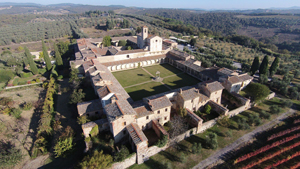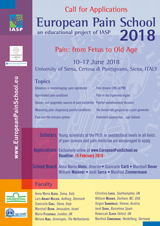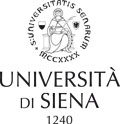Welcome
Background

The European Pain School (EPS), founded at the University of Siena (Italy) in 2002, is the first and still the premier school intended for students working on basic science and clinical topics related to acute and chronic pain. EPS has an interdisciplinary perspective and a distinct research orientation. Beginning with the EPS 2012 cycle EPS was adopted as an educational project of the International Association for the Study of Pain (IASP). Young scientists at the Ph.D. or postdoctoral levels (or equivalent) in all fields of pain science and pain medicine are encouraged to apply.
Mission and Overview
In the past the basic mechanisms of pain and the neural pathways involved were explored through research on animals and human subjects using well defined noxious stimuli and observing neurophysiological, behavioral and subjective sensory responses. This straightforward approach, however, is not sufficient to understand most of the real-life spontaneous and prolonged pain states that occur in human patients and animals. Rather, chronic pain involves complex and nonlinear functioning of neural and extraneural systems resulting in the maintenance of the pain process.
Long known are inflammatory mechanisms that can induce a prolonged pain state mediated by pain-producing substances of multiple origin including the immune system, with cytokines stimulating peripheral nociceptors or neurons of the central somatosensory system. Prolonged and enhanced activation of the central pain system may also be due to failure of inhibitory controls in the CNS, a likely mechanism in neuropathic pain. Control by both GABA and endogenous opioids may be affected, causing persistent pain and allodynia. Altered control may also be mediated by cytokines released from activated astrocytes and microglia in the CNS.
The mammalian pain system shows a clear sexual dimorphism that may depend on hormonal influences during peri- and postnatal nervous system development, among other causes. This sexual dichotomy has consequences for pain expression and for psychosocial and medical consequences of pain in males and females, including e.g. the process of pain chronification. Recognition of this dichotomy is resulting in developments in pain medicine that take gender into account.
The International Association for the Study of Pain (IASP) and its worldwide chapters provide impetus to these and other emerging aspects of pain disease mechanisms, resulting in the advancement of interdisciplinary programs for the ultimate benefit of pain patients. The European Pain School is focused on advancing this new vision among junior investigators interested in basic and clinical research on pain.
Topics
- Advances in neuroimaging; pain signatures
- Age-related pain conditions
- Genetic and epigenetic sources of pain variability
- Measuring pain; diagnosing painful conditions
- Pain and the immune system
- Pain drivers: CNS vs PNS
- Pain in the trigeminal region
- Painful somatosensory illusions
- The dorsal root ganglion as a pain generator
- Treatment approaches... age tailored
Faculty 2018
Anna Maria Aloisi, Siena, Italy
Lars Arendt-Nielsen, Aalborg, Denmark
Giancarlo Carli, Siena, Italy
Marshall Devor, Jerusalem, Israel
Stephanie Koch, London, UK
Miriam Kunz, Groningen, The Netherlands
Christina Liossi, Southampton, UK
William Maixner, Durham, NC, USA
Jürgen Sandkühler, Vienna, Austria
Jordi Serra, Barcelona, Spain
Rebeccah Slater, Oxford, UK
Manfred Zimmermann, Heidelberg, Germany
Past cycles of the School
EPS 2017 • CNS vs PNS Contributions to Persistent Pain (4-11 June 2017)
EPS 2016 • Pain: Neurons, Gender and Society (5-12 June 2016)
EPS 2015 • Plasticity in neural processing as a mechanism in chronic pain (7-14 June 2015)
EPS 2014 • Spontaneous versus Evoked Pain in Animals and Humans (8-15 June 2014)
EPS 2013 • Brain Modulation of Pain Experience (9-16 June 2013)
EPS 2012 • Evolution of Concepts on Pain (3-10 June 2012)
EPS 2011 • Pain: Bridging Molecules and Mind (12-19 June 2011)
EPS 2010 • Translating Pain Science into Pain Medicine (30 May - 6 June 2010)
EPS 2009 • Molecular Mechanisms of Pain Response (13-20 June 2009)
EPS 2008 • Hyperexcitable Neurons as Pain Generators (15-22 June 2008)
EPS 2007 • Pain Syndromes: Science and Medical Practice (17-24 June 2007)
EPS 2006 • Pain and the Central Nervous System (12-17 June 2005)
EPS 2005 • Chronic Pain a Disease: The Role of Genes (6-11 June 2005)
EPS 2003 • Chronic Pain a Disease: Novel Scientific Concepts (25-31 October 2003)
Important dates
Application deadline:
EXTENDED TO
28 February 2018
Notification of selections:
23 March 2018
Deadline for attendance confirmation:
10 April 2018
Deadline for payment:
4 May 2018


 European
European










